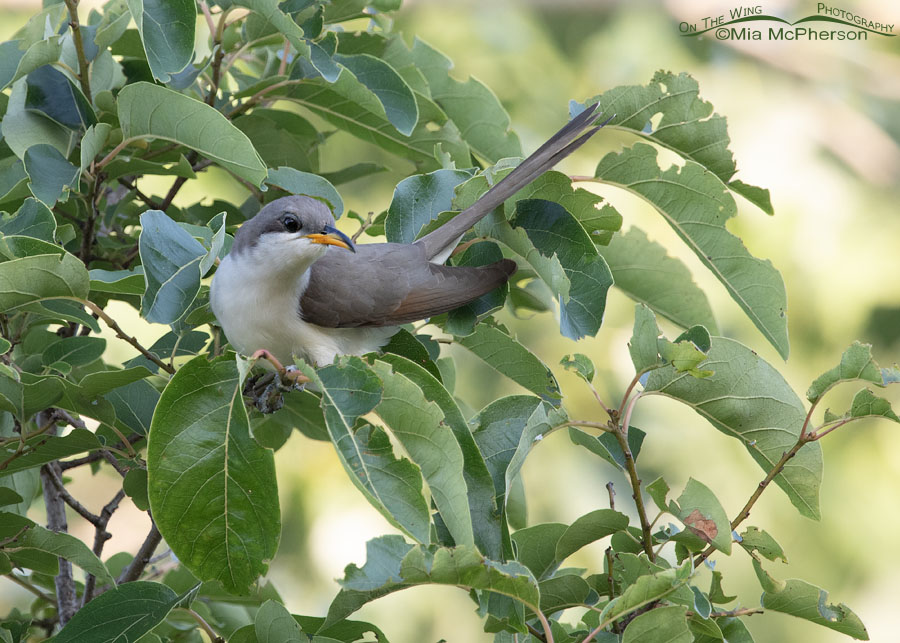In addition to getting Mississippi Kite images I liked on my last visit to Tishomingo NWR, I finally took some Yellow-billed Cuckoo photos that I enjoy too.
 Yellow-billed Cuckoo aka Rain Crow in Oklahoma – Nikon D500, f8, 1/250, ISO 800, +0.7 EV, Nikkor 500mm VR with 1.4x TC, natural light
Yellow-billed Cuckoo aka Rain Crow in Oklahoma – Nikon D500, f8, 1/250, ISO 800, +0.7 EV, Nikkor 500mm VR with 1.4x TC, natural light
Yellow-billed Cuckoos are rather elusive; hiding in plain sight is one of their abilities. I am hearing these cuckoos frequently now at the refuges I visit and even at home from the trees that are a road south and east.
These cuckoos can be especially hard to spot because they sit so still and blend in so well in their preferred habitats. I hear them more than I see them, that is for sure.
I stopped at the refuge to listen to some White-eyed Vireos calling when I noticed this Yellow-billed Cuckoo fly in and land in a nearby tree. I knew exactly where the bird was and still had a hard time finding it when I looked through my viewfinder.
Once I locked onto the cuckoo, I let my camera do the work by adjusting my settings. The lighting conditions weren’t the greatest, but when it comes to these birds, I often have to do the best with the lighting conditions I have.
Yellow-billed Cuckoos are also called Rain Crows and Storm Crows because of their habit of calling before storms roll in. My thanks go out to Steve Creek, my dear friend and fellow photographer, for teaching me the colloquial name “Rain Crow” when I visited him in Arkansas last year. I’d never used that name and now I do!
I used to enjoy hearing and seeing Yellow-billed Cuckoos in my garden in Virginia. Sitting on my porch and hearing their calls was a joy. Once I believe I heard a Yellow-billed Cuckoo calling in the Wasatch Mountains of Utah. I never saw the bird so I never reported it except to a few friends.
I need to make a whole new section in my bird photo galleries to showcase these cuckoos. In time, I will.
Life is good.
Mia


Nice shot. What an interesting bird. I can see why it took awhile to find it. “Rain Crow” has a nice ring to it. Thanks Mia.
Pretty bird. I like Rain Crow. Do they also lay eggs in other’s nests?
Happy you are seeing and hearing and taking photos of new birds. Never seen or heard a Cuckoo bird. Thanks for the information you share.
Beautiful! I last heard a Cuckoo in the woods near Bad Kreuznach. It was a wonderful moment to hear it!
How wonderful to ‘need’ to create a new section in your photo galleries for this beautiful bird. Love its nickname too.